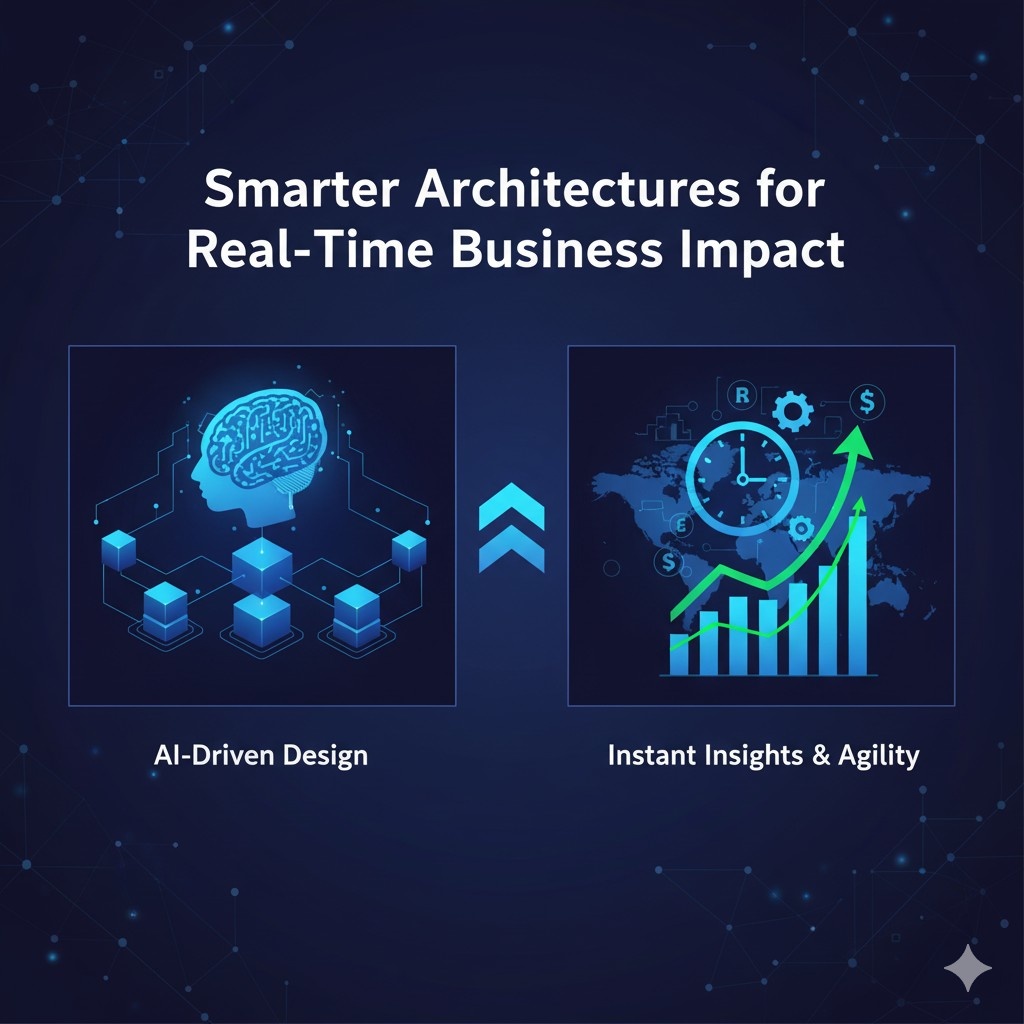Smarter Architectures for Real-Time Business Impact

A new wave of smarter, real-time architectures is redefining how businesses sense, interpret, and act on data with unprecedented speed. As enterprises push for agility, adaptive systems powered by AI, edge computing, and event-driven frameworks are closing the gap between insight and action. This shift marks a pivotal moment for organizations seeking faster decisions, higher resilience, and meaningful competitive advantage.
Background: Why Real-Time Architecture Suddenly Matters
For years, businesses relied on batch systems that processed data hours—or even days—after events occurred. But with rising customer expectations, digital competition, and data exploding from IoT devices, social signals, and cloud apps, delayed insights quickly became a liability.
The push toward automation, AI-driven decision support, and zero-latency experiences created a need for architectures that respond in real time.
Key Developments
Industry leaders and cloud providers have been rolling out systems engineered for immediate responsiveness:
Event-Driven Pipelines
Modern applications increasingly use event streams instead of periodic batches, allowing systems to react the moment a signal is generated.
AI-Accelerated Insights
Real-time inference—powered by optimized AI models—enables applications to classify behavior, predict outcomes, and trigger workflows instantly.
Distributed & Edge Processing
By processing data closer to its source, businesses reduce latency, improve reliability, and cut cloud dependence.
Continuous Intelligence Platforms
Enterprise software stacks now integrate analytics, rules engines, and automation to support “intelligent reaction loops” that learn and evolve. Experts note that these architectural changes allow businesses to move from reactive dashboards to proactive, automated decision-making.
Technical Breakdown
Real-time architectures rely on three foundational layers:
Streaming ingestion (e.g., message queues, distributed logs)
Acts as the nervous system, transmitting events instantly.
in-memory or near-memory compute
Ensures data is processed without waiting on disk-based systems.
Autonomous action systems
Triggered by AI models or rules engines, executing actions with minimal human intervention.
A useful analogy: Instead of waiting to review security footage at the end of the day, a real-time system is like having intelligent cameras that instantly alert you to suspicious activity and lock the door automatically.
Implications for Businesses
Organizations adopting these architectures stand to gain:
- Faster decision cycles
- Improved customer experiences
- Reduced operational delays
- Risk mitigation through early detection
- Greater automation and reduced manual overhead
In industries like finance, logistics, retail, and healthcare, milliseconds can shape outcomes—and smarter architecture translates directly to real-world advantage.
Challenges and Limitations
Despite their promise, real-time systems are not without hurdles:
* High implementation and maintenance complexity
* Need for scalable infrastructure and robust data governance
* Dependency on sophisticated monitoring and failover mechanisms
* Potential for automation errors if AI models behave unpredictably
Balanced deployment remains key.
Future Outlook
The next wave of innovation points to autonomous enterprises—systems that monitor, diagnose, and optimize themselves. As AI models become more efficient and edge hardware more capable, real-time architectures will move deeper into everyday business operations, enabling predictive and self-healing digital ecosystems.
Conclusion
Smarter architectures for real-time business impact represent more than a technical upgrade—they are a strategic shift toward enterprises that think and act with the speed of their data. With long-term implications for competitiveness and innovation, this evolution is one worth watching closely.